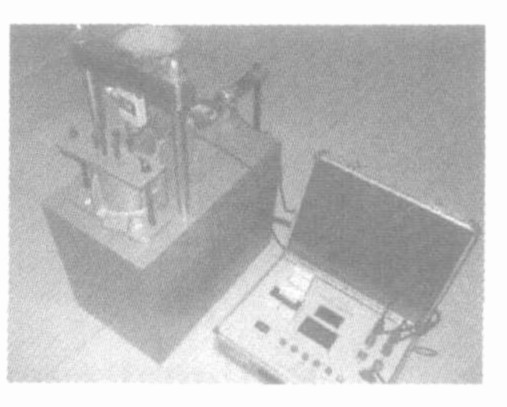Rational range determination of key sieve pores for graded crushed stone based on shear performance
-
摘要: 利用自行研制的柔性材料剪切性能测试仪, 通过级配碎石抗剪切性能试验研究, 分析了不同筛孔及其通过率对级配碎石剪切性能的影响。结果表明: 级配碎石剪切强度随4.750 mm和0.600 mm筛孔通过率的增加近似呈抛物线趋势变化, 随2.360 mm筛孔通过率的增加呈平卧的反“S”形状变化, 随0.075 mm筛孔通过率的增加总体上单调增加; 对于最大粒径为31.500 mm、泰波公式指数为0.5的级配碎石, 4.750、2.360、0.600、0.075 mm筛孔均应视为关键筛孔进行控制; 以剪切强度大于520.5 kPa为控制指标, 推荐关键筛孔4.750、2.360、0.600和0.075 mm基于剪切性能的通过率合理变化范围分别为35%~44%、22%~37%、10.0%~17.5%和2.0%~7.5%。Abstract: Using the flexible material shear performance tester, the shear performance of graded crushed stone was tested, the influences of variety sieve pores and their passage rates on the shear performance were analyzed. The shear strength of graded crushed stone changes as parabola trend with the passage rate increasing of the pores 4.750 mm and 0.600 mm, it waves as horizontal inverse "S" curve with the passage rate increasing of the pore 2.360 mm, it gradually increases as a whole with the passage rate increasing of the pore 0.075 mm. The result indicates that the sieve pores, including 4.750, 2.360, 0.600 and 0.075 mm, should be regarded as key sieve pores for graded crushed stone, whose maximum grain size is 31.5 mm and the index of the Taibol formula is 0.5, for the control index that the shear strength exceeds 520.5 kPa, the rational change ranges of the key sieve pores passage rates based on the shear performance are recommended, the change ranges of the rational passage rates including the sieve pores 4.750, 2.360, 0.600 and 0.075 mm are 35%~44%, 22%~37%, 10.0%~17.5% and 2.0%~7.5% respectively.
-
Key words:
- pavement engineering /
- graded crushed stone /
- shear performance /
- key sieve pore /
- passage rate /
- rational change range
-
表 1 基于单一筛孔通过率的级配各筛孔通过率
Table 1. Graded passage rate of every sieve pore based on single sieve pore passage rate
级配 通过各筛孔(mm)百分率/% 31.500 26.500 19.000 16.000 13.200 9.500 4.750 2.360 1.180 0.600 0.300 0.150 0.075 T31.500-4.750-29 100 92 78 71 65 55 29 27 19 14 10 7 5 T31.500-4.750-34 100 92 78 71 65 55 34 27 19 14 10 7 5 L31.500b 100 92 78 71 65 55 39 27 19 14 10 7 5 T31.500-4.750-44 100 92 78 71 65 55 44 27 19 14 10 7 5 T31.500-4.750-49 100 92 78 71 65 55 49 27 19 14 10 7 5 T31.500-2.360-21 100 92 78 71 65 55 39 21 19 14 10 7 5 T31.500-2.360-24 100 92 78 71 65 55 39 24 19 14 10 7 5 L31.500b 100 92 78 71 65 55 39 27 19 14 10 7 5 T31.500-2.360-30 100 92 78 71 65 55 39 30 19 14 10 7 5 T31.500-2.360-33 100 92 78 71 65 55 39 33 19 14 10 7 5 T31.500-0.600-10 100 92 78 71 65 55 39 27 19 10 10 7 5 T31.500-0.600-12 100 92 78 71 65 55 39 27 19 12 10 7 5 L31.500b 100 92 78 71 65 55 39 27 19 14 10 7 5 T31.500-0.600-16 100 92 78 71 65 55 39 27 19 16 10 7 5 T31.500-0.600-18 100 92 78 71 65 55 39 27 19 18 10 7 5 T31.500-0.075-2 100 92 78 71 65 55 39 27 19 14 10 7 2 T31.500-0.075-4 100 92 78 71 65 55 39 27 19 14 10 7 4 L31.500b 100 92 78 71 65 55 39 27 19 14 10 7 5 T31.500-0.075-6 100 92 78 71 65 55 39 27 19 14 10 7 6 T31.500-0.075-8 100 92 78 71 65 55 39 27 19 14 11 8 8 表 2 最大干密度、最佳含水量试验结果
Table 2. Testing results of maximum dry density and best water content
级配 最佳含水量/% 最大干密度/(g·cm-3) 级配 最佳含水量/% 最大干密度/(g·cm-3) T31.500-4.750-29 5.3 2.353 T31.500-0.600-10 5.2 2.411 T31.500-4.750-34 5.3 2.381 T31.500-0.600-12 5.3 2.401 L31.500b(4.750-39) 5.4 2.450 L31.500b(0.600-14) 5.4 2.450 T31.500-4.750-44 5.4 2.421 T31.500-0.600-16 5.4 2.448 T31.500-4.750-49 5.5 2.432 T31.500-0.600-18 5.6 2.425 T31.500-2.360-21 5.3 2.353 T31.500-0.075-2 5.1 2.398 T31.500-2.360-24 5.4 2.420 T31.500-0.075-4 5.3 2.433 L31.500b(2.360-27) 5.4 2.450 L31.500b(0.075-5) 5.4 2.450 T31.500-2.360-30 5.4 2.434 T31.500-0.075-6 5.6 2.435 T31.500-2.360-33 5.5 2.439 T31.500-0.075-8 5.8 2.453 表 3 抗剪切试验结果
Table 3. Shear performance testing results
级配 剪切位移/mm 剪切强度/MPa 变异系数/% 级配 剪切位移/mm 剪切强度/MPa 变异系数/% T31.500-4.750-29 7.0 0.5092 10 T31.500-0.600-10 6.9 0.5274 21 T31.500-4.750-34 6.9 0.5131 15 T31.500-0.600-12 6.8 0.5356 12 L31.500b(4.750-39) 5.7 0.5600 16 L31.500b(0.600-14) 5.7 0.5600 15 T31.500-4.750-44 6.2 0.5292 10 T31.500-0.600-16 6.3 0.5519 15 T31.500-4.750-49 8.2 0.5416 17 T31.500-0.600-18 8.0 0.511 4 21 T31.500-2.360-21 7.6 0.4928 20 T31.500-0.075-2 6.4 0.4731 9 T31.500-2.360-24 7.1 0.602 2 14 T31.500-0.075-4 7.2 0.5490 17 L31.500b(2.360-27) 5.7 0.5600 16 L31.500b(0.075-5) 5.7 0.5600 15 T31.500-2.360-30 6.9 0.5249 11 T31.500-0.075-6 6.0 0.5324 14 T31.500-2.360-33 7.1 0.5848 14 T31.500-0.075-8 7.6 0.6185 13 -
[1] 莫石秀. 多年冻土地区级配碎石路用性能及设计方法研究[D]. 西安: 长安大学, 2004. [2] 何兆益. 碎石基层防止半刚性基层沥青路面裂缝及其路用性能研究[D]. 南京: 东南大学, 1997. [3] JTJ 034-2000, 公路路面基层施工技术规范[S]. [4] 王哲人. 级配碎石混合料的动力变形特性[J]. 中国公路学报, 2003, 16(1): 22—26. https://www.cnki.com.cn/Article/CJFDTOTAL-ZGGL200301005.htmWang Zhe-ren. Dynamic deformation characteristic of grading macadam mixture[J]. China Journal of Highway and Transport, 2003, 16(1): 22—26. (in Chinese) https://www.cnki.com.cn/Article/CJFDTOTAL-ZGGL200301005.htm [5] 张占军, 周庆华, 胡长顺, 等. 桥面防水层90°剥离仪的开发及实验[J]. 长安大学学报(自然科学版), 2004, 24(5): 35—39. https://www.cnki.com.cn/Article/CJFDTOTAL-XAGL200405009.htmZhang Zhan-jun, Zhou Qing-hua, HU Chang-shun, et al. Testing and developing of 90°peel apparatus for concrete bridge deck waterproofing layer[J]. Journal of Chang'an University (Natural Science Edition), 2004, 24(5): 35—39. (in Chinese) https://www.cnki.com.cn/Article/CJFDTOTAL-XAGL200405009.htm [6] 毛成, 邱延峻. 结构层模量对路面力学响应影响的三维数值分析[J]. 交通运输工程学报, 2003, 3(1): 35—39. http://transport.chd.edu.cn/article/id/200301008Mao Cheng, Qiu Yan-jun. 3-Dnumerical analysis of influence of layer modulus on structural responses of asphalt pavements[J]. Journal of Traffic and Transportation Engineering, 2003, 3(1): 35-39. (in Chinese) http://transport.chd.edu.cn/article/id/200301008 [7] 钱振东, 罗剑. 正交异性钢桥面板铺装层受力分析[J]. 交通运输工程学报, 2004, 4(2): 10—13. https://www.cnki.com.cn/Article/CJFDTOTAL-JYGC200402003.htmQian Zhen-dong, Luo Jian. Pavement stress analysis of orthotropic steel deck[J]. Journal of Traffic and Transportation Engineering, 2004, 4(2): 10—13. (in Chinese) https://www.cnki.com.cn/Article/CJFDTOTAL-JYGC200402003.htm [8] 谢水友, 郑传超. 水平荷载对沥青路面结构的影响[J]. 长安大学学报(自然科学版), 2004, 24(2): 75—79. https://www.cnki.com.cn/Article/CJFDTOTAL-XAGL200402003.htmXie Shui-you, Zheng Chuan-chao. Influence of horizontal loads on asphalt pavement structure[J]. Journal of Chang'an University(Natural Science Edition), 2004, 24(2): 75—79. (in Chi-nese). https://www.cnki.com.cn/Article/CJFDTOTAL-XAGL200402003.htm [9] 邓卫东, 张兴强, 陈波, 等. 路基不均匀沉降对沥青路面受力变形影响的有限元分析[J]. 中国公路学报, 2004, 17(1): 12—15. doi: 10.3321/j.issn:1001-7372.2004.01.003Deng Wei-dong, Zhang Xing-qiang, Chen Bo, et al. Nonlinear FEM analysis of asphalt pavement on non-homogenous settlement of roadbed[J]. China Journal of Highway and Transport, 2004, 17(1): 12—15. (in Chinese) doi: 10.3321/j.issn:1001-7372.2004.01.003 -





 下载:
下载:




